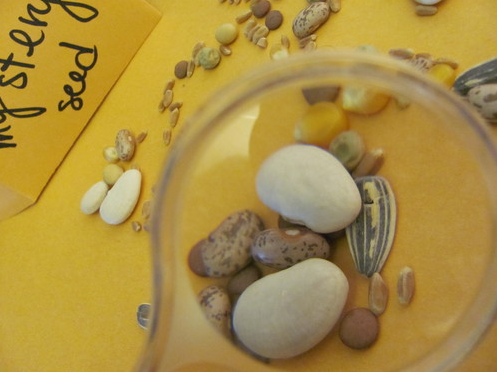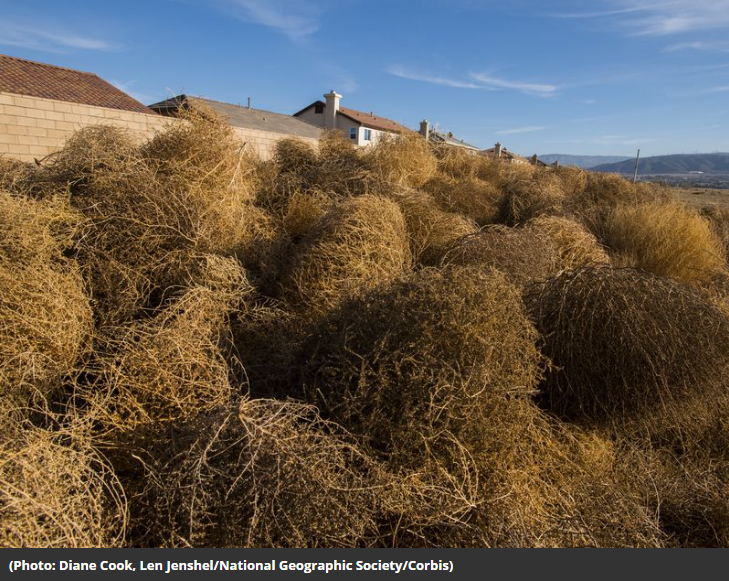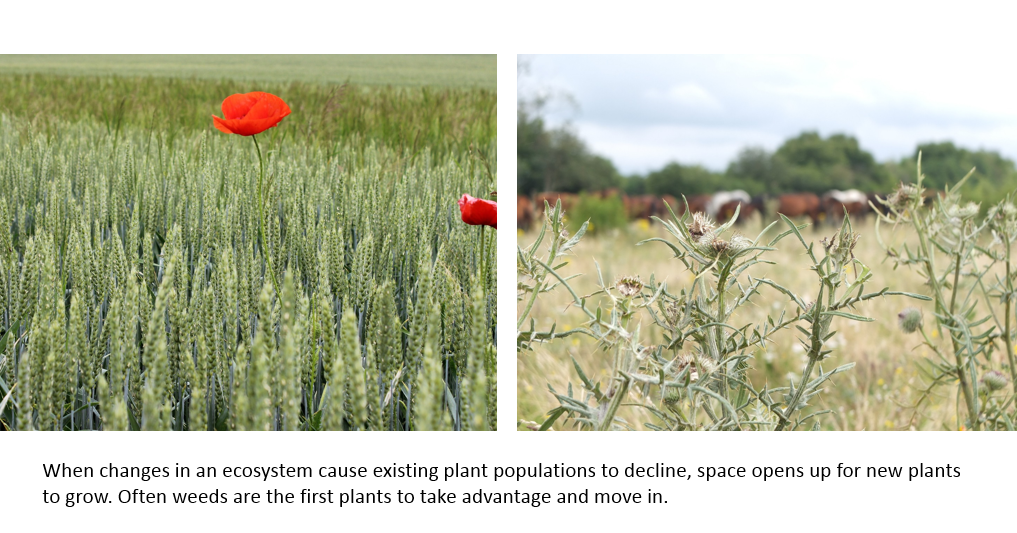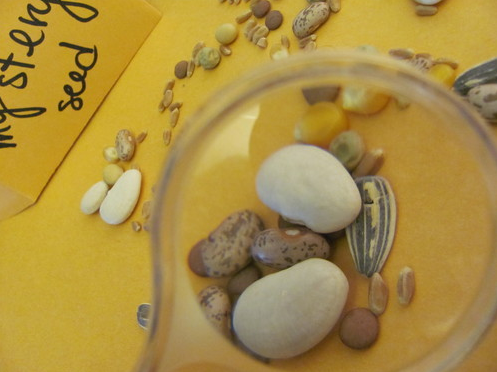Crop Case Files: Dichotomous Keys
Students will explore the connection between weeds and ecosystem stability, practice observing characteristics by using and creating a dichotomous key, and research and present information on noxious weeds.

Background
Lesson Activities
Recommended Companion Resources
Credits
Author
Lyndi Perry, Debra Spielmaker, and Sara Hunt | Utah Agriculture in the Classroom
Standards
Texas Content Area Standards
-
Principles of Agriculture, Food, and Natural Resources: 130.2.c.1
The student demonstrates professional standards/employability skills as required by business and industry. The student is expected to:
- Principles of Agriculture, Food, and Natural Resources: 130.2.c.1.C: demonstrate knowledge of personal and occupational safety, environmental regulations, and first-aid policy in the workplace.
-
Principles of Agriculture, Food, and Natural Resources: 130.2.c.4
The student explains the historical, current, and future significance of the agriculture, food, and natural resources industry. The student is expected to:
- Principles of Agriculture, Food, and Natural Resources: 130.2.c.4.B: analyze the scope of agriculture, food, and natural resources and its effect upon society.
- Principles of Agriculture, Food, and Natural Resources: 130.2.c.4.F: compare and contrast issues impacting agriculture, food, and natural resources such as biotechnology, employment, safety, environment, and animal welfare issues.
-
Principles of Agriculture, Food, and Natural Resources: 130.2.c.6
The student demonstrates appropriate personal and communication skills. The student is expected to:
- Principles of Agriculture, Food, and Natural Resources: 130.2.c.6.A: demonstrate written and oral communication skills appropriate for formal and informal situations such as prepared and extemporaneous presentations.
- Principles of Agriculture, Food, and Natural Resources: 130.2.c.6.B: demonstrate effective listening skills appropriate for formal and informal situations.
-
Principles of Agriculture, Food, and Natural Resources: 130.2.c.7
The student applies appropriate research methods to agriculture, food, and natural resources topics. The student is expected to:
- Principles of Agriculture, Food, and Natural Resources: 130.2.c.7.B: use a variety of resources for research and development.
- Principles of Agricultures, Food, and Natural Resources: 130.2.c.7.A: discuss major research and developments in the fields of agriculture, food, and natural resources.
-
Principles of Agriculture, Food, and Natural Resources: 130.2.c.11
The student develops technical knowledge and skills related to plant systems. The student is expected to:
- Principles of Agriculture, Food, and Natural Resources: 130.2.c.11.A: describe the structure and functions of plant parts.
- Principles of Agriculture, Food, and Natural Resources: 130.2.c.11.D: identify plants of importance to agriculture, food, and natural resources
-
Principles of Agriculture, Food, and Natural Resources: 130.2.c.15
The student explains the relationship between agriculture, food, and natural resources and the environment. The student is expected to:
- Principles of Agriculture, Food, and Natural Resources: 130.2.c.15.A: determine the effects of agriculture, food, and natural resources upon safety, health, and the environment.
-
ELA: 5.110.7.b.1
Developing and sustaining foundational language skills: listening, speaking, discussion, and thinking- oral language. The students develops oral language through listening, speaking, and discussion.
- ELA: 5.1.C: The student is expected to give an organized presentation employing eye contact, speaking rate, volume, enunciation, natural gestures, and conventions of language to communicate ideas effectively.
- ELA: 5.1.D: The student is expected to work collaboratively with others to develop a plan of shared responsibilities.
-
ELA: 6.110.22.b.12
Inquiry and research: listening, speaking, reading, writing, and thinking using multiple texts. The student engages in both short-term and sustained recursive inquiry processes for a variety of purposes.
- ELA: 6.12.D: The student is expected to identify and gather relevant information from a variety of sources.
- ELA: 6.12.F: The student is expected to synthesize information from a variety of sources.
- ELA: 6.12.J: use an appropriate mode of delivery, whether written, oral, or multimodal, to present results.
-
ELA: 7.110.23.b.1
Developing and sustaining foundational language skills: listening, speaking, discussion, and thinking- oral language. The student develops oral language through listening, speaking, and discussion.
- ELA: 7.1.D: The student is expected to engage in meaningful discourse and provide and accept constructive feedback from others.
-
ELA: 7.110.23.b.12
Inquiry and research: listening, speaking, reading, writing, and thinking using multiple texts. The student engages in both short-term and sustained recursive inquiry processes for a variety of purposes.
- ELA: 7.12.D: The student is expected to identify and gather relevant information from a variety of sources.
- ELA: 7.12.F: The student is expected to synthesize information from a variety of sources.
- ELA: 7.12.J: The student is expected to use an appropriate mode of delivery, whether written, oral, or multimodal, to present results.
-
ELA: 8.110.24.b.1
Developing and sustaining foundational language skills: listening, speaking, discussion, and thinking- oral language. The student develops oral language through listening, speaking, and discussion.
- ELA: 8.1.D: The student is expected to participate collaboratively in discussions, plant agendas with clear goals and deadlines, set time limits for speakers, take notes, and vote on key issues.
-
ELA: 8.110.24.b.12
Inquiry and research: listening, speaking, reading, writing, and thinking using multiple texts. The student engages in both short-term and sustained recursive inquiry processes for a variety of purposes.
- ELA: 8.12.D: The student it expected to identify and gather relevant information from a variety of sources.
- ELA: 8.12.F: The student is expected to synthesize information from a variety of sources.
- ELA: 8.12.J: The student is expected to use an appropriate mode of delivery, whether written, oral, or multimodal, to present results.
-
Science: 6.112.26.b.4
Scientific and engineering practices. The student knows the contributions of scientists and recognizes the importance of scientific research and innovation on society. The student is expected to:
- Science: 6.112.26.b.4.C: research and explore resources such as museums, libraries, professional organizations, private companies, online platforms, and mentors employed in a science, technology, engineering, and mathematics (STEM) field to investigate STEM careers.
-
Science: 6.112.26.b.12
Organisms and environments. The student knows that interdependence occurs between living systems and the environment. The student is expected to:
- Science: 6.112.26.b.12.A: investigate how organisms and populations in an ecosystem depend on and may compete for biotic factors such as food and abiotic factors such as availability of light and water, range of temperatures, or soil composition;
-
Science: 6.112.26.b.13
Organisms and environments. The student knows that organisms have an organizational structure and variations can influence survival of populations. The student is expected to:
- Science: 6.112.26.b.13.C: describe how variations within a population can be an advantage or disadvantage to the survival of a population as environments change
-
Technology Applications: 126.17.c.1
Computational thinking--foundations. The student explores the core concepts of computational thinking, a set of problem-solving processes that involve decomposition, pattern recognition, abstraction, and algorithms. The student is expected to:
- Technology Applications: 126.17.c.1.A: decompose real-world problems into structured parts by using visual representation


